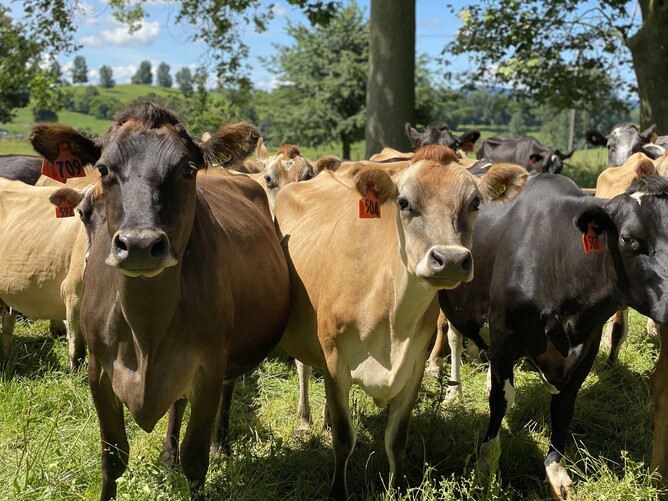The most common reason for not reaching BCS targets is not allowing enough time.
If cows don’t achieve body condition score (BCS) targets at calving;
They will produce less
It impacts their reproductive performance
And impacts their health and welfare
There is also evidence that BCS in early lactation can affect the sex of future calves1 and the productive and reproductive capacity of heifers yet to be born2.
The four main strategies to help achieve individual cow BCS targets at calving (5.0 for mixed age cows and 5.5 for first and second calvers) include; increasing feed allocation to lactating cows, reducing milking frequency in mid-late lactation, drying-off cows early, and/or feeding dry cows for BCS gain.
Considerations:
A lactating cow requires more actual feed to gain BCS compared with a dry cow
Although a lactating cow requires 25% less energy to store fat or gain a BCS unit than a dry cow, genetic selection over time has resulted in cows that partition energy to milk production at the expense of BCS while they are being milked. Feeding an additional 150 kg DM over 100 days will increase BCS by 0.25 units in a late lactation cow compared with 1.0 BCS unit in a dry cow.
Maintain similar feed allocation if changing milking frequency
Reducing milking frequency to once-a-day (OAD) or using a flexible system for a longer period, like milking three times in two (3in2) days, can improve BCS at dry-off while achieving longer lactations. But it is key to maintain a similar feed allocation to when the cows were being milked twice a day so there is energy available for BCS gain.
The rate of gain can be less than expected
Immediately after drying off, cows rarely gain BCS in the first couple of weeks and sometimes they may lose BCS during this period mostly as feed is being restricted to reduce milk production.
On our pasture based systems cows will only gain 0.5 BCS per month on average during the dry period and 0.6 – 0.7 BCS units per month if fed a diet containing high levels of supplement or high energy crops.
And in the last month before calving, dry cows will only gain very little BCS (less than 0.1 BCS units) because of the large energy demands and inefficient use of nutrients by the growing calf.
Tips:
Draft cows into mobs, based on BCS, age and expected calving date allows the right mix of approaches to be applied to cows with similar gains in BCS required.
Determine the length of the dry period required for cows to reach BCS targets at calving by how much BCS they need to gain, the amount of feed available and the type of feed that will be offered during the dry period.
Use a certified BCS assessor to accurately score your herd and put the information into WelFarm to monitor how your herd is tracking.
Use your support network to devise plans to ensure your cows achieve their targets and you can optimise productivity and profitability next season.
References
DairyNZ body condition scoring, The reference guide for New Zealand dairy farmers, version 2 10-2021
1. Kay, J. Feeding for condition score gain. 2014. DairyNZ Technical Series, April, Issue 21: 5-8. Accessed May 2021
2. Roche, J. R., J. M. Lee, and D. P. Berry. 2006. Pre-conception energy balance and secondary sex ratio - partial support for the Trivers-Willard hypothesis in dairy cows. Journal of Dairy Science 89:2119-2125.

